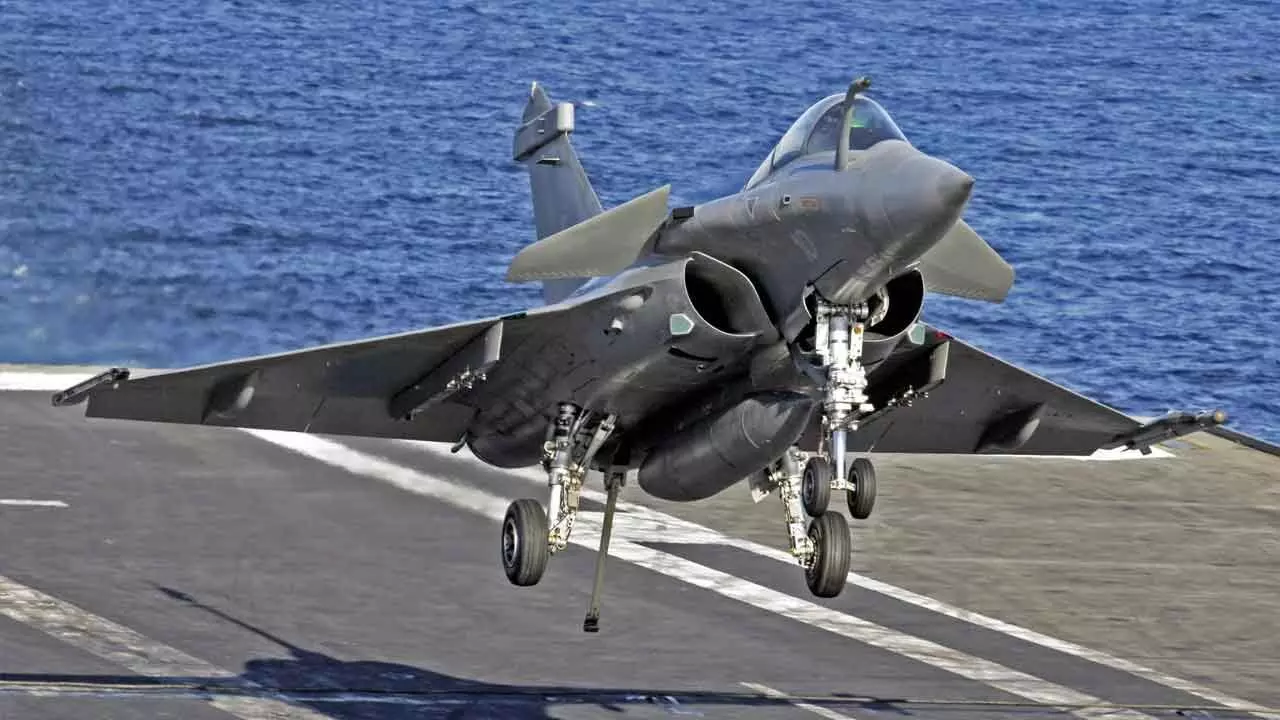Rafale-M To Strengthen India’s Naval Power Until Its Own Fighter Jet Is Ready
As these advanced aircraft prepare to operate from INS Vikrant and INS Vikramaditya, they will enhance India’s power projection across maritime zones while addressing gaps in naval air defence
Rafale-M To Strengthen India’s Naval Power Until Its Own Fighter Jet Is Ready

On April, 28 2025, India signed a significant defense agreement with France to procure 26 Rafale-Marine fighter jets, valued at approximately Rs 63,000 crore. This includes 22 single-seat jets and 4 twin-seat jets. This deal marks India's first acquisition of the naval variant of the Rafale, making it the first international operator of this model. The deal also covers pilot training, flight simulators, weapons, essential equipment, and long-term maintenance support. In addition, it includes extra gear for the Rafale jets already being used by the Indian Air Force. In line with the Government's thrust on Aatmanirbhar Bharat, the agreement includes Transfer of Technology for integration of indigenous weapons in India.
Rafale-Marine: Indian Navy’s Next-Generation Fighter Jet
The Rafale-Marine (Rafale-M) is a powerful, advanced fighter jet designed to operate from aircraft carriers at sea. Unlike regular fighter jets that take off from land, this aircraft can launch from and land on moving ships, even in tough sea conditions. It is built by Dassault Aviation of France and is already getting used by the French Navy.
The Indian Navy currently operates two aircraft carriers, INS Vikrant and INS Vikramaditya. The recent agreement for the procurement of 26 Rafale-M aircraft from France will enhance the Navy’s fleet, with these jets capable of operating from both carriers. The Rafale-M jets will be used for missions like air defence, maritime strike, reconnaissance, and shore strikes. The aircraft will help the Navy target enemy fighter jets, ensuring the air defence capability of the fleet and allowing the Navy to exercise control over the seas while staying outside enemy weapon ranges. The Rafale-M jets will also improve the Navy’s ability to prevent adversaries from gaining maritime domain awareness, weakening their ability to provide targeting information to other platforms. These aircraft’s induction will greatly enhance the Navy’s overall operational reach and strength.
India’s journey with the Rafale fighter aircraft began in 2016 when the government signed a deal with France to purchase 36 jets, aimed at strengthening the country’s defence and enhancing the capabilities of the Indian Air Force (IAF). The first five Rafale jets arrived in India in July 2020 and were stationed at Air Force Station Ambala, later joining the 101 Squadron in West Bengal. These jets were initially used for training Indian pilots and technicians in France before being inducted into the IAF.
The deal for these 36 Rafale jets was different from the earlier plan to buy 126 aircraft. While the original plan involved 108 planes to be built in India, the new agreement focused on 36 jets being directly delivered from France. This deal included better pricing, maintenance terms, and additional support like weapons and simulators. Over the years, the collaboration between India and France has also extended to other defence projects, such as submarines.
By 2030, India will have a total of 62 Rafale jets in service, including 26 Rafale-M aircraft, making it the first country to operate both versions of the Rafale aircraft after France. The addition of the Rafale-M will significantly strengthen India’s air and naval power, ensuring dominance in both the skies and at sea, while reinforcing the nation's sovereignty.
Strategic Importance for India
Enhancing Naval Capabilities: The introduction of the Rafale-Marine will significantly bolster the Indian Navy's operational capabilities, particularly in the Indian Ocean region. It addresses the limitations of the existing MiG-29K fleet and provides a modern, reliable platform for various missions.

